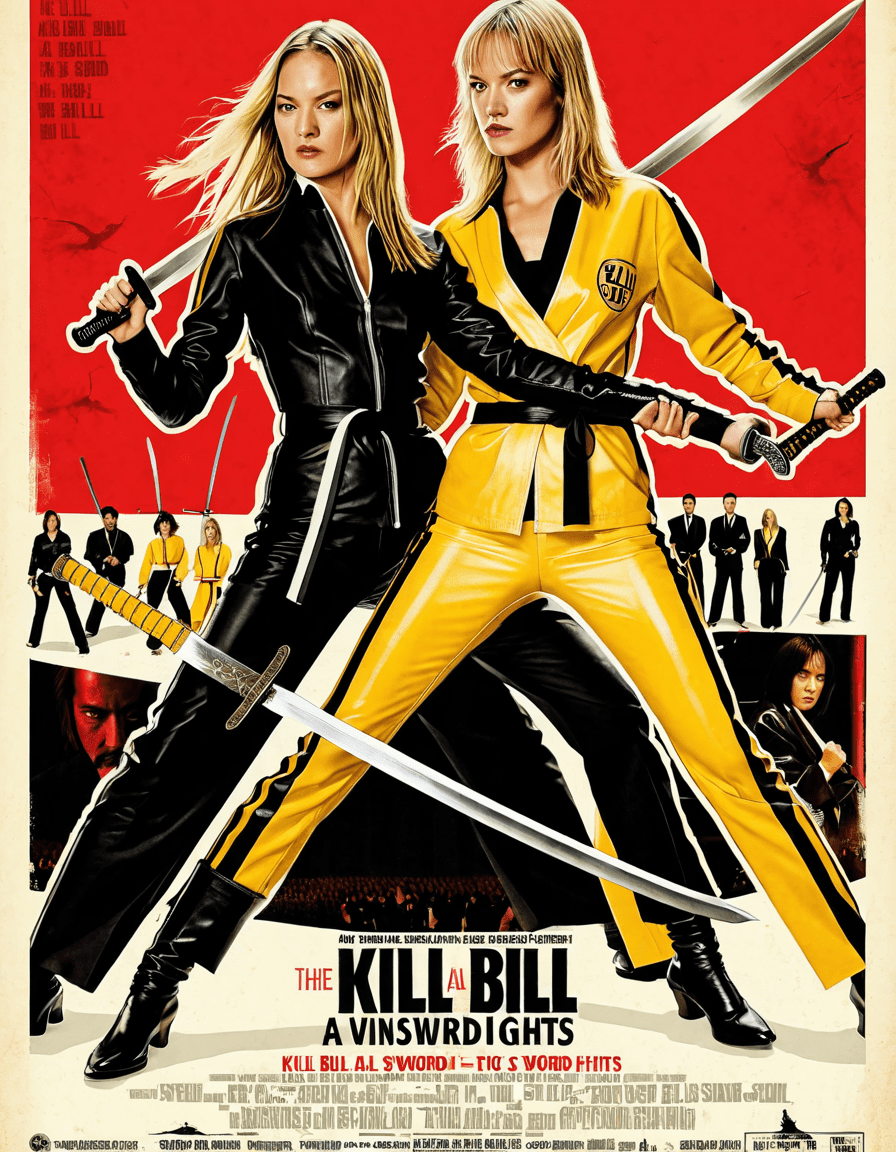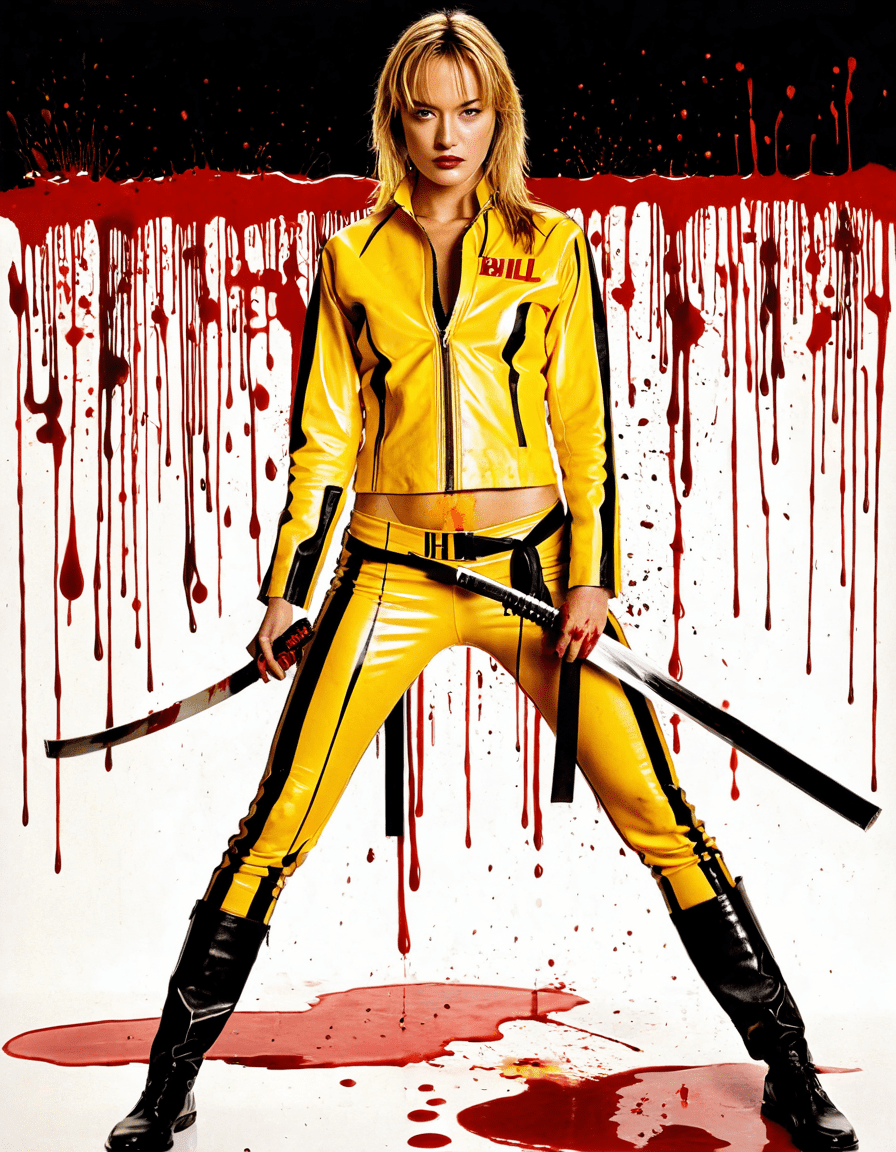Quentin Tarantino’s Kill Bill, a two-part cinematic jewel released between 2003 and 2004, has etched itself into the very fabric of revenge narratives. Its mixture of genres, nods to martial arts, and Tarantino’s unmistakable style draw audiences in, even two decades after the initial release. Fans of cinema, whether they are movie nerds, die-hard enthusiasts, or curious newcomers, continue to revel in The Bride’s (Uma Thurman’s) journey for vengeance. This article digs into the lasting resonance of Kill Bill, drawing parallels to iconic horror films like Scream (1996) and the buzz surrounding Scream 7.
Top 7 Reasons Why Kill Bill Remains an Enduring Classic
Kill Bill shakes up conventional storytelling, using a non-linear narrative that keeps audiences glued to their seats. Much like the Scream franchise—where creator Wes Craven played with expectations—Kill Bill employs chapters that spotlight individual tales while creating a cohesive arc. As audiences travel alongside The Bride, they experience the thrill of retribution refreshingly delivered, turning the hunt for vengeance into a rich storytelling tapestry.
Tarantino’s work is a cinematic love letter, drawing from various influences like martial arts films, spaghetti Westerns, and samurai cinema. For instance, the stylized violence and aesthetic flair reminiscent of Lady Snowblood envelop viewers and create a rich experience. Similarly, Scream revitalized the slasher genre, both critiquing and celebrating its conventions. The way both films intertwine nostalgia and innovation demonstrates their lasting impact on future filmmakers who experiment and pay tribute to the classics.
Beatrix Kiddo, also known as The Bride, breaks the mold for female leads in action films. Portrayed by Uma Thurman, she embodies resilience and complexity that challenge conventional gender roles. Just like characters in the Scream universe who transcend the typical ‘final girl’ narrative, The Bride sets a new standard. As Scream 7 looms on the horizon, the evolution of female representation in cinema continues to thrive, carving paths for complex roles in all genres.
The visual artistry in Kill Bill shines with vibrant colors and inventive framing that make each scene a work of art. Tarantino carefully crafts each shot, echoing the stylistic choices in Scream, where visuals heighten suspense and tension. This attention to detail fosters a cinematic experience that’s hard to forget, inspiring current filmmakers to prioritize aesthetics in their projects. The legacy of Kill Bill encourages new voices to explore bold visual storytelling in genres both familiar and new.
Music plays a pivotal role in Kill Bill, as the soundtrack pulses with various influences, adding emotional depth. Tracks like “Bang Bang (My Baby Shot Me Down)” resonate long after the film ends. Just as Scream employs an eclectic mix of songs to encapsulate its tone, both films exhibit how music shapes memorable cinematic experiences. The impactful soundtracks provide an emotional anchor, making Kill Bill a film fans return to for its aesthetic as much as its content.
A diverse cast of villains enriches the narrative of Kill Bill, from O-Ren Ishii to Bill himself. Their complex interactions with The Bride fuel the story’s thrilling momentum. In a similar vein, the Scream franchise is notorious for its iconic characters, particularly the Ghostface killer, who blends horror with dark humor. Anticipation is high for character development in Scream 7, where audiences expect antagonists as captivating as those in Tarantino’s world.
The cultural footprint of Kill Bill stretches wide, inspiring parodies, fashion trends, and countless references in other media. As seen in series like The Marvelous Mrs. Maisel, Tarantino’s stylized dialogue still shapes contemporary storytelling. Likewise, Scream epitomizes cultural significance, paving the way for meta-horror. As Scream 7 approaches, it’s clear that the echoes of these landmark films resonate in Hollywood, setting the stage for fresh approaches to genre storytelling.

The New Wave of Revenge Narratives
Revenge narratives thrive in contemporary cinema, where Kill Bill’s legacy looms large. Films like Promising Young Woman draw from themes rooted in Tarantino’s work, showing the relevance of revenge, particularly through a comedic lens. This genre has shifted, reflecting broader societal conversations regarding morality, justice, and the human experience.
The bonds between Kill Bill and the Scream franchise illuminate the evolution of genre cinema. With Scream 7 on its way, the excitement goes beyond seeing another thrilling horror flick; it’s about continuing critical discussions surrounding female empowerment and the clever subversion of tropes. Both films promise to inspire future filmmakers, offering guiding principles that keep dark humor, stylized violence, and a rich tapestry of storytelling at the forefront of cinematic exploration.
Today’s creators can draw significant inspiration from the groundbreaking innovations of Kill Bill and the cultural commentary articulated in Scream. Both films opened floodgates for narratives that transcend time and trend, ensuring that the quest for revenge and understanding of complex human desires remains alive and well in cinema’s future. So grab some popcorn, dim the lights, and enjoy the ride—whether it’s a brutal showdown or a witty meta-commentary, there’s always something thrilling waiting just around the corner!
Kill Bill: Fun Trivia and Interesting Facts About the Iconic Revenge Saga

Behind the Scenes of Kill Bill
Did you know that Cissy Houston, the legendary singer and mother of Whitney Houston, contributed her vocal talents to the Kill Bill soundtrack? Talk about a musical twist in an action-packed film! This adds another layer of depth to Quentin Tarantino’s gritty but artistic revenge saga, showcasing how culture blends into cinema. Speaking of cultural references, Kill Bill was heavily inspired by classic martial arts films and the style of anime, giving it that vibrant and eclectic feel. It’s not just a revenge tale; it’s like a love letter to the genres that influenced Tarantino, proving that art is a rich tapestry.
The Iconic Characters of Kill Bill
Let’s shift gears to the characters. Ever heard of Gloria Reuben? Before she became a go-to actress, she had her share of early roles, including one that showcased her versatility. Her inclusion in films like Kill Bill hints at how the casting choices reflect a mix of talents that elevate the narrative. Let’s not forget about the iconic fight scenes, which made fans excited to see Uma Thurman in action. Her character, the Bride, is a blend of vulnerabilities and fierce strength, reminiscent of historical avengers. Talk about a remarkable role models!
A Unique Homage in Kill Bill
Now here’s a fun fact that might surprise you: the infamous “Crazy 88” scene is a nod to Japanese pop culture, specifically to how the absurd can enhance a story’s intensity. Can you picture the artistry it takes to choreograph such an elaborate sequence? It’s just like learning How To draw a butterfly in art; the beauty lies in the details. Furthermore, the film’s revenge theme resonates well with those who have felt a sense of injustice, much like the themes explored in various popular series, including Paranormal Activity. This deep connection has made Kill Bill a timeless work that many revisit for its artistry and bold storytelling.
So, whether you’re a die-hard fan or just dipping your toes into the universe of Kill Bill, remember that this film’s layers extend far beyond action sequences; it’s a melting pot of inspirations, relationships, and cultural flourishes that give us a taste of film history.








